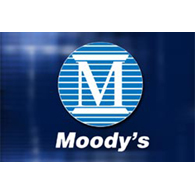Tashkent, Uzbekistan, April 16
By Demir Azizov - Trend:
The outlook for the Uzbek banking system remains stable, Moody's Investors Service said on April 15.
"The outlook is stipulated by the country's high economic growth with large volume of investments directed by the government through the largest banks to the country's economy," according to the statement. Other factors include Uzbek banks' high earnings which generate capital to fund the loan growth. Moreover, Moody's leading asset-quality indicators suggest stable trends for problem loans."
The rating agency highlights that the country's economic growth has been much less volatile than in other CIS countries, as Uzbekistan's commodity exports are relatively diversified, and the government uses export revenues to fund public investments.
Moody's stresses positively the stability of commodity prices (cotton, natural gas and wheat) that represent the rating agency's leading indicators for asset quality in Uzbek banks. The agency expects the average ratio of problem loans to total gross loans to remain in the range of 6-7 percent in the next 12-18 months. However, loan-loss reserves (IFRS) formed by Uzbek banks usually cover only around 50 percent of problem loans, which Moody's regards as insufficient.
Under Moody's central scenario assuming more prudent provisioning charges and 20 percent loan growth, rated banks' Basel I capital adequacy ratio would fall to 11.6 percent during the next 12-18 months, from the rating agency's estimate of 13.9 percent as of late 2013.
Moody's believes that in order to preserve the current statutory total capital adequacy ratio levels in line with loan growth, rated banks would need in aggregate to raise an additional $250 million of new capital in 2014-15.
Over 12-18 months, Uzbek banks will be exposed to risks associated with rapid loan growth, the agency said. Uzbekistan's banking system is vulnerable to structural weaknesses such as underdeveloped corporate governance and a high degree of state intervention in banks' business activities and pricing policy. Uzbek banks are characterized by high borrower concentrations, and short-term corporate deposits account for the majority of customer funding.
Uzbek banks' operating profits are among the highest in the CIS countries. The commissions contribute close to 40 percent of operating revenues. Over the outlook period, Moody's expects Uzbek banks' profitability to remain stable with return on average assets remaining around 1.5 percent and return on average equity in the range of 13-15 percent, the agency said.
Liquid assets, mostly cash held at the central bank, accounted for more than 30 percent of total assets as of late 2013. The high loan-to-deposit ratio, at 140 percent as of late 2013, reflects the composition of funding in the system; corporate and retail deposits only comprised about 60 percent of Uzbek banks' non-equity funding as of late 2013, while stable financing from the Uzbek government amounted to about 20 percent and funding from international financial institutions around 10 percent.
Any uplift to Uzbek banks' ratings from systemic support is low. If support to banks' capital is required, the government often opts for regulatory forbearance, the agency said.
There are 27 commercial banks in Uzbekistan, including three - state, four - with foreign capital, 11 - joint-stock and nine - private.
The total assets of Uzbek commercial banks increased by 30.3 percent - to 43.9 trillion soums, the total loan portfolio - by 29.9 percent to 26.5 trillion soums, the amount of deposits - by 14.5 percent to 26.1 trillion soums, equity capital - by 4.8 percent to 6.5 trillion soums in 2013.
The official exchange rate is 2272.02 soums/$1 on April 16.






